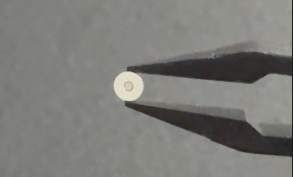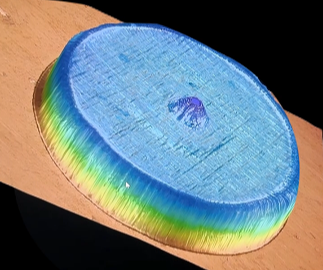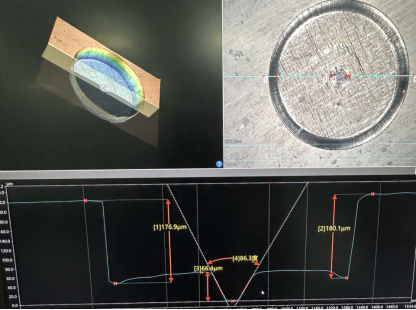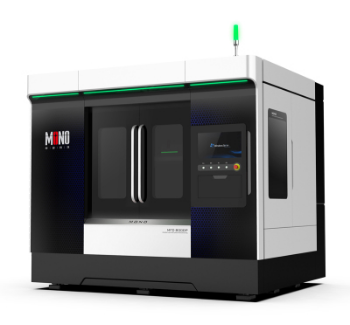In the field of microfabrication, femtosecond laser technology is gradually becoming a key means to process complex microporous structures on precious metal materials. Among them, monochrome technology has performed well in the application of technology in this field. In this article, we will focus on the use of a femtosecond laser with monochrome technology to process a special micropore structure on a 0.2mm thick platinum disc, which consists of a countersunk hole and a tapered pore, where the taper hole has a minimum pore diameter of 35μm, while meeting the requirements of good electrical conductivity, burr-free edges, and carbon-free.

Platinum discs (sample)
Platinum is a precious metal with high chemical stability, good electrical conductivity and excellent corrosion resistance, which is widely used in high-end fields such as electronics and medical treatment. However, it is difficult to process, especially for complex structures at the micro/nano scale. Traditional processing methods often face a number of problems when dealing with platinum materials. For example, machining can easily lead to material deformation, and it is difficult to ensure accuracy for tiny size holes; EDM can introduce impurities on the surface of the material, affecting its conductivity, and it is difficult to machine micropores with complex shapes.
Monochrome Technology's femtosecond laser processing offers the possibility to solve these problems based on its unique principle. The duration of femtosecond laser pulses is extremely short, and in such a short period of time, the laser energy is highly concentrated in a tiny area of the material. When a laser is applied to a platinum disc, the material rapidly absorbs energy and ionizes in a very short period of time, forming a plasma that removes the material.

Counterbore + taper bore (3D schematic diagram)
In order to guarantee burr-free and carbon-free microporous edges, the ultrashort pulse characteristics of the monochrome technology femtosecond laser play a key role. Due to the extremely short pulse time, the heat does not have time to conduct a large amount in the material, resulting in a very small heat-affected zone around the processing area. This greatly reduces burr generation and material carbonization due to thermal effects compared to traditional processing methods. At the same time, in the process of processing, auxiliary gas and other means can be used to discharge the plasma and debris generated by the processing in time to further ensure the smoothness and cleanliness of the hole wall.
From a conductivity point of view, femtosecond laser processing with monochrome technology avoids the introduction of excessive impurities and defects. Because the whole process is based on the physical vaporization of the material, there will be no residual chemicals in the material like some chemical processing methods, so as to ensure the good conductivity of platinum micropores.

Detection data
The special microporous structures processed on platinum discs have important applications in many fields. In the pin connection of electronic chips or microcircuits, such microvias can provide high-precision connection points, and their good conductivity can ensure the stability of signal transmission. In some miniature sensors in the medical field, this microbore structure can be used to improve the performance and reliability of the sensor. In short, the application of monochrome technology's femtosecond laser technology in platinum disc microhole processing provides a high-quality and high-precision processing solution for high-end manufacturing.

Femtosecond laser precision microhole molding equipment

